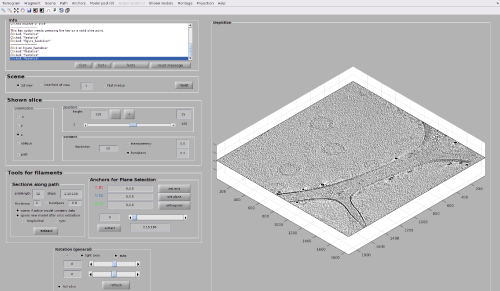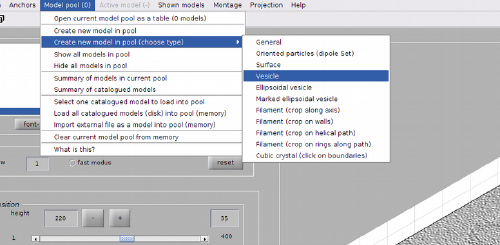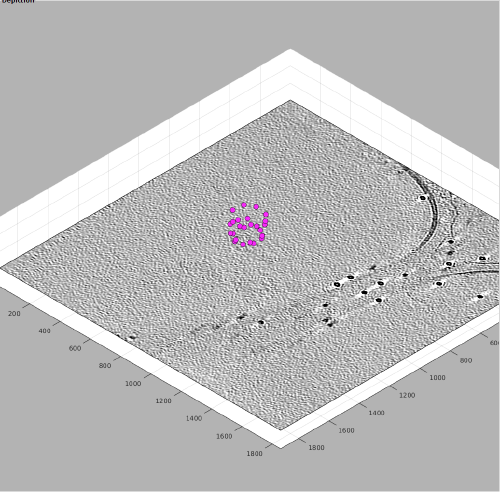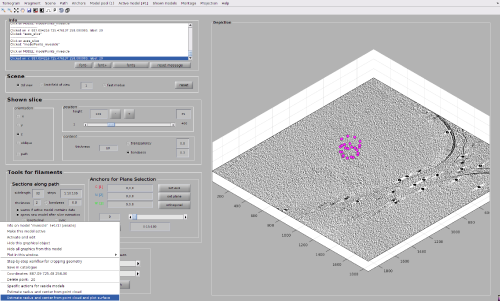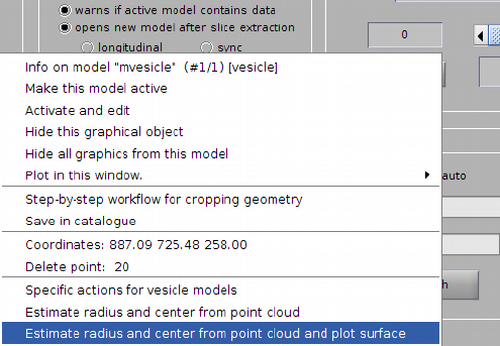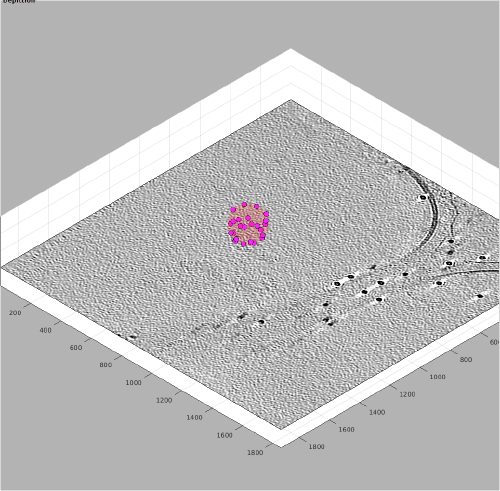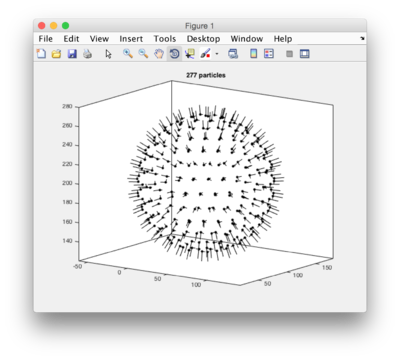Difference between revisions of "Vesicle models"
| Line 15: | Line 15: | ||
Given in pixels. | Given in pixels. | ||
Defines the mean separation of the cropping positions to be defined in the vesicle surface. When choosing this value, you should think on [[Seed oversampling|oversampling]] the actual distribution of particles that you expect. | Defines the mean separation of the cropping positions to be defined in the vesicle surface. When choosing this value, you should think on [[Seed oversampling|oversampling]] the actual distribution of particles that you expect. | ||
| + | |||
| + | |||
| + | ==Picking vesicles in a tomogram browser== | ||
| + | |||
| + | There are different methods for vesicle picking interactively. | ||
| + | |||
| + | ===Cloud of points=== | ||
| + | |||
| + | The most robust method requires from the user to pick several points in each vesicle model, and then let ''Dynamo'' fit the radius and the center. This procedure can be performed through the browser [[dtmslice | <tt>dtmslice</cc>]]. | ||
| + | |||
| + | |||
| + | [[File:VesiclePickGlobal.png|thumb|center|500px|A tomogram with several vesicles shown in <tt>dtmslice</tt>]] | ||
| + | |||
| + | [[File:VesicleClickSelectVesicleModelDetail.png|thumb|center|500px|Creation of a vesicle model]] | ||
| + | |||
| + | [[File:VesicleClickSeveralLayers.png|thumb|center|500px|Click vesicle points on different ''z'' levels (use [<tt>c</tt>] to pick each)]] | ||
| + | |||
| + | [[File:VesicleClickAllLayers.png|thumb|center|500px|View from a lower ''z'' level ]] | ||
| + | |||
| + | [[File:VesicleClickMenuFitting.png|thumb|center|500px|Menu options after secondary click on a model point]] | ||
| + | |||
| + | [[File:VesicleClickMenuFittingDetail.png|thumb|center|500px|Menu options after secondary click on a model point]] | ||
| + | |||
| + | [[File:VesicleClickFittingInTomoslice.png|thumb|center|500px|Depiction of the fitted vesicle surface]] | ||
Revision as of 18:11, 14 February 2017
Vesicle models are appropriate when particles are evenly distributed on surfaces reasonably similar to spheres or ellipsoids. The model can estimate the center and radius provided points provided by the user in the visible part of the object, or the other way round, letting the user provided center and radius.
Contents
Important parameters
Radius
Given in pixels. Can be estimated or provided by the user.
Center
Given in pixels. Can be estimated or provided by the user.
Separation
Given in pixels. Defines the mean separation of the cropping positions to be defined in the vesicle surface. When choosing this value, you should think on oversampling the actual distribution of particles that you expect.
Picking vesicles in a tomogram browser
There are different methods for vesicle picking interactively.
Cloud of points
The most robust method requires from the user to pick several points in each vesicle model, and then let Dynamo fit the radius and the center. This procedure can be performed through the browser dtmslice</cc>.
Command line
Here come some examples of creation and manipulation of vesicle models from the command line
Given user points
Given center and radius
a = dmodels.vesicle(); % creates an empty vesicle model a.radius = 70; a.center = [40,100,200]; a.separation = 15; a.updateCrop(); % here it will some time computing the particles. t=a.grepTable(); % extracts the table dtplot(t,'profile','oriented_positions'); % scatter plot of images axis equal; % for a better visualization, same scale an x,y,z shg
